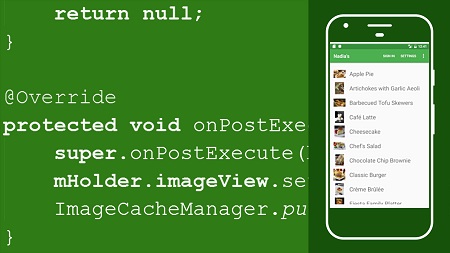
English | MP4 | AVC 1280×720 | AAC 48KHz 2ch | 2h 25m | 504 MB
Android integrates with a variety of cloud-based and custom web services in a variety of ways, including RESTful services created in PHP or Java, to get, update, and send data over the web. This course shows how you can take advantage of web services, integrations, and libraries to optimize how your app handles network connectivity, errors, data management, and more.
Instructor Dаvid Gаssnеr starts with an overview discussion about available networking strategies, and then dives into how to declare networking permissions, make network requests, handle responses, parse data returned from a web service, and pass user credentials to services that support HTTP basic authentication. He also provides an overview of popular higher-level networking libraries, including OkHttp and Picasso, and offers recommendations for improving performance in network-connected apps. David also covers using static feeds, using dynamic PHP pages hosted on a public server web service, and integrating apps with network data storage.
Topics include:
- Integrating mobile apps
- Communicating with Android
- Preventing app freezes with background threads
- Preparing an app for network communication
- Declaring permissions
- Checking network connectivity
- Retrieving data over the web
- Using traditional APIs
- Using third-party libraries
Table of Contents
Introduction
Welcome
What you should know before starting this course
How to use the exercise files
1. Getting Started
Choose an HTTP client
Review the starting app
Review the sample web service
2. Manage Multithreading in Android
Concurrent programming in Android
Manage requests with AsyncTask
Manage requests with AsyncTaskLoader
Manage requests with IntentService
Report progress from IntentService
3. Requesting Data over the Web
Set permissions and check the connection
Request data with HttpURLConnection
Model response data with POJO classes
Parse JSON responses with Gson
Parse XML responses with XmlPullParser
Add credentials for basic authentication
4. Working with Binary Responses
Display data in a RecyclerView
Download images from a web server
Load images in response to list requests
Cache images in persistent storage
5. Sending Data to Web Services
Send parameters in a GET request
Send parameters in a POST request
6. Manage HTTP Requests with Libraries
Send GET requests with OkHttp
Send POST requests with OkHttp
Request and display images with Picasso
Conclusion
Next steps
Resolve the captcha to access the links!